Monitor Ghosting is a common issue that you might see on any monitor. If you’re playing a shooter or an action game, you’re likely to encounter this issue which can ruin the whole gaming experience. It could also occur when you’re editing videos or working on tasks that involve displaying fast-paced scenes.
The good news is, it’s easy to identify if your monitor has this issue. Plus there are some known effective fixes. In this article, we’ll explain what monitor ghosting is, why it happens and most importantly, we’ll cover how to fix it. Read on for more information…
What is monitor ghosting?
Monitor ghosting or screen ghosting, as the name indicates, is a monitor/display issue. It has little to do with your system. Monitor ghosting usually occurs when there are multiple images moving fast on your screen, or when you’re moving your mouse quickly. If your monitor is ghosting on your game, you’ll likely notice:
- Blurry trails following moving objects
- Previous image frame remains on your screen for a few seconds when you’ve moved to the next image frame
- Current image is blurry
- Discolored images
You may now wonder, why is your monitor ghosting? Ghosting is most frequently seen in LCD monitors, but for any type of monitor, the two main factors remain the same: refresh rate and response time.
Simply put, screen refresh rate refers to how often your screen displays a new image. For example, a 60Hz refresh rate means that the monitor refreshes itself 60 times per second.
Response time, on the other hand, is the time it takes for a pixel to shift between colors. The more responsive your monitor is, the shorter the response time it’ll have.
If your monitor has a low refresh rate and a high response time, you’ll likely experience the screen ghosting issue.
How do I fix the ghosting on my monitor?
To test if your monitor has the ghosting issue, you can find several tests online. The most popular tool is UFO Test. You’ll get a green signal saying READY if your monitor doesn’t have a ghosting issue. Otherwise, you may get an orange signal suggesting a specific problem with your monitor.
If you’ve identified the issue, check out the fixes below. You don’t have to try them all, just work your way down until you find the one that does the trick!
2: Check other devices connected to your PC
3: Adjust your monitor’s display settings
4: Update your graphics driver
Fix 1: Check your monitor cable
First, you want to make sure that your monitor cable is firmly plugged in. Try unplugging then replugging in the cable and test if the issue persists.
You may also want to check if your monitor cable is intact. A damaged monitor cable could result in monitor ghosting, in which case you should change your monitor cable and test if the problem persists.
If your monitor cable is functional, move on to the next solution.
Fix 2: Check other devices connected to your PC
Sometimes other devices connected to your PC, such as your keyboard or speaker could interfere with your monitor’s function. It could be an issue of proximity, meaning that you just need to keep your monitor far from those devices.
Or, you could disconnect those devices one at a time and test if your screen still ghosts. Make sure to check the wireless devices as well. If one of your devices seems to cause the ghosting issue, try not to use it with your monitor at the same time.
If this fix doesn’t help, try the next solution.
Fix 3: Adjust your monitor’s display settings
As we mentioned above, refresh rate and response time are the main factors that are responsible for the ghosting issue. You can adjust your monitor’s settings to achieve a higher refresh rate and a lower response time which helps prevent your screen from ghosting.
3: Additional tweaks (Optional)
Adjust the response time
Monitor manufacturers have made this easy – you’re able to adjust the response time via the OSD (On Screen Display) menu:
- Press the menu button on the front or the side of your monitor.
- Navigate to the settings for the response time, and adjust for a lower response time. Different brands use different terminology:
Asus & HP: adjust the OverDrive function to medium or low, or completely turn it off.
Asus: enable the TraceFree function.
BenQ: enable Advanced Motion Acceleration (AMA).
DELL: adjust the Response Time setting. Turn it to fast or super-fast.
LG & Samsung: adjust Response Time.
Other brands: You could look for Response Time, OverDrive, Response Time Compensation, Motion Acceleration, Response Time Acceleration, etc.
Adjust the refresh rate
If your monitor supports variable refresh rates, you can set it to a higher value to tackle the monitor ghosting problem. To view the refresh rate of your monitor and make adjustments if possible:
On Windows 10:
- In the search bar next to the Start button, type advanced display then click View advanced display info.
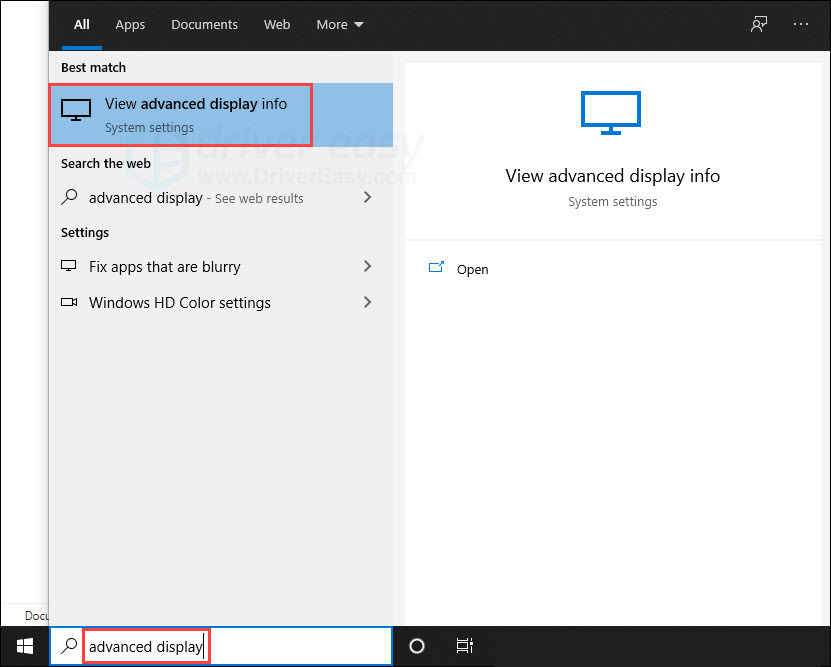
- You’ll see your monitor’s refresh rate here. If it’s adjustable, you can change it to a higher value via the drop-down menu option.
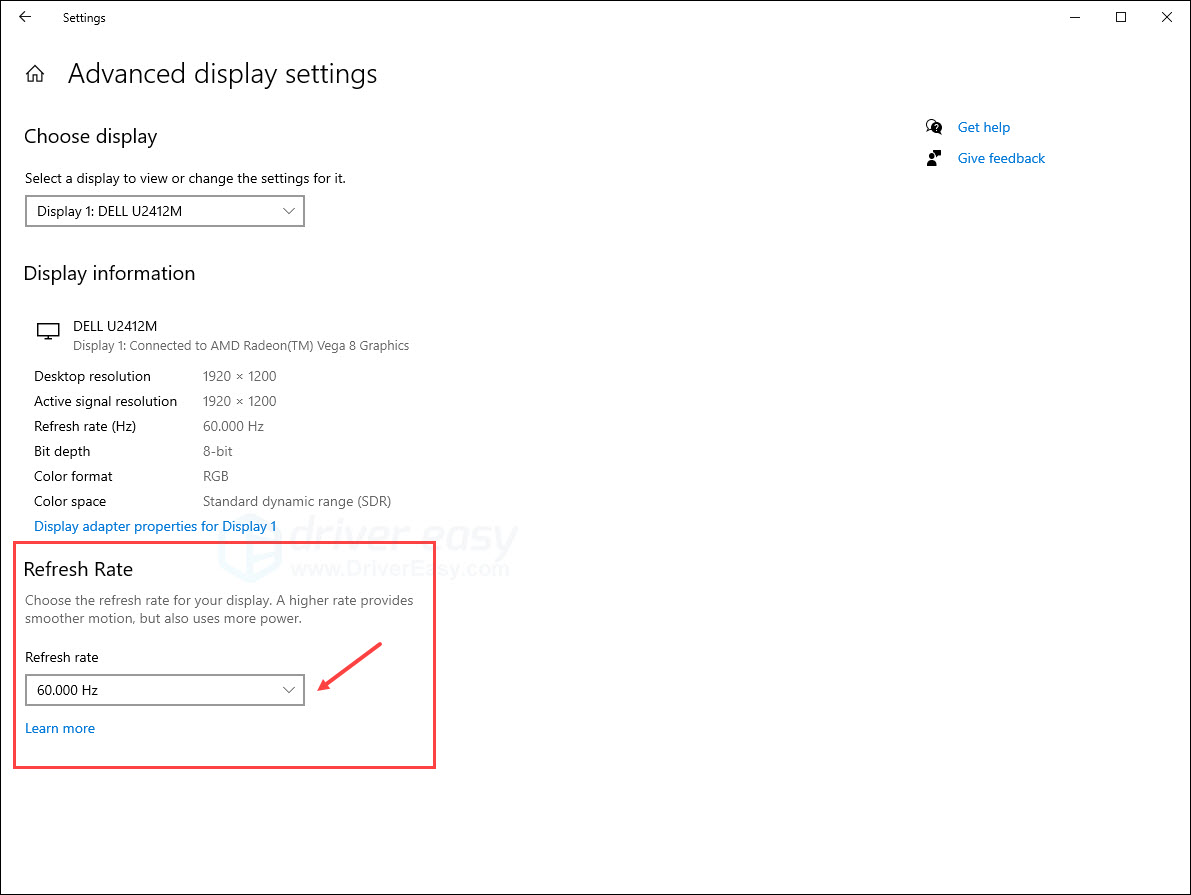
On Windows 7/8:
- Right-click an empty area on your desktop, then click Screen resolution.
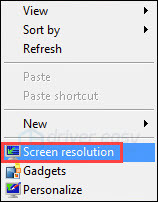
- Click Advanced settings.
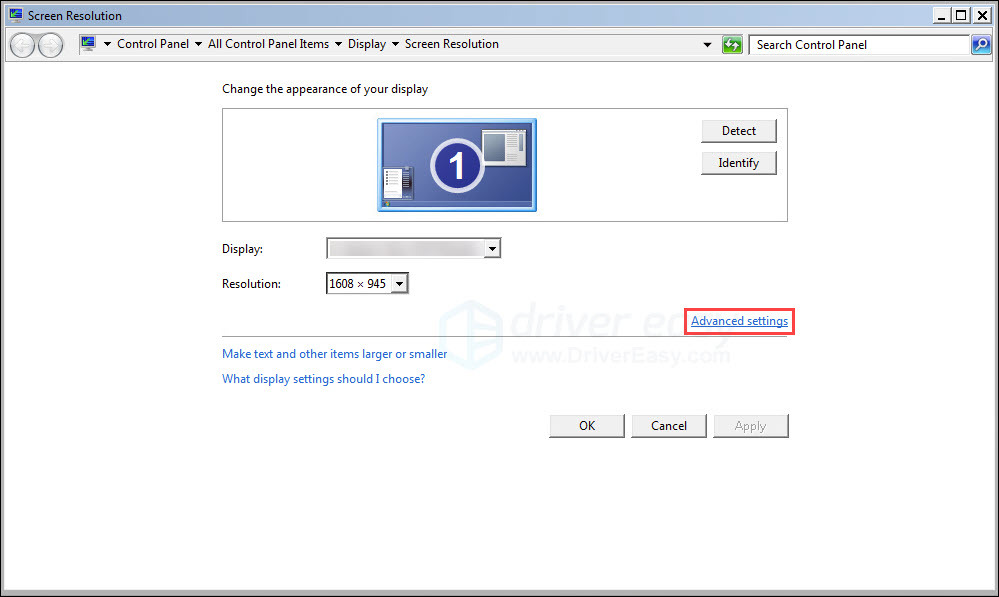
- Under the Monitor tab, you can view the refresh rate of your monitor. If your monitor supports variable refresh rates, you can set it to a higher value via the drop down-menu option.
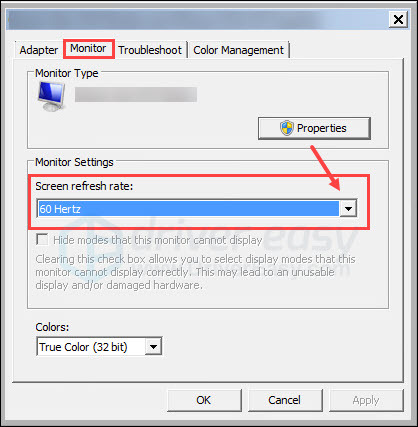
Additional tweaks (Optional)
In addition to response time and refresh rate, you could experiment with other display settings to see if it helps solve the monitor ghosting issue. Make sure to test your monitor’s functionality while adjusting. To make additional tweaks, look for these settings:
Perfect clear
Motion smoothing
Dynamic contrast
Noise reduction
Fix 4: Update your graphics driver
Although we explained earlier that screen ghosting is primarily an issue of the monitor, not of GPU, you could still try updating your graphics driver. When you can’t identify what’s causing your monitor to ghost, it’s a good idea to do so since it generally fixes and prevents many display issues, which may include monitor ghosting in your case.
One way to keep your video card driver up-to-date is to manually update it via Device Manager. If Windows suggests your driver is up-to-date, you can still check if there’s a newer version and update it in Device Manager. Go to the manufacturer’s website, and search for the latest correct driver. Be sure to only choose a driver that is compatible with your Windows version.
Automatic driver update – If you don’t have the time, patience, or computer skills to update your driver manually, you can, instead, do it automatically with Driver Easy. Driver Easy will automatically recognize your system and find the correct driver for your exact video card and your Windows version, then it will download and install them correctly:
- Download and install Driver Easy.
- Run Driver Easy and click the Scan Now button. Driver Easy will then scan your computer and detect any problem drivers.

- Click the Update button next to the flagged graphics card driver to automatically download the correct version of the driver, then you can manually install it (you can do this with the FREE version).
Or click Update All to automatically download and install the correct version of all the drivers that are missing or out of date on your system. (This requires the Pro version which comes with full support and a 30-day money-back guarantee. You’ll be prompted to upgrade when you click Update All.)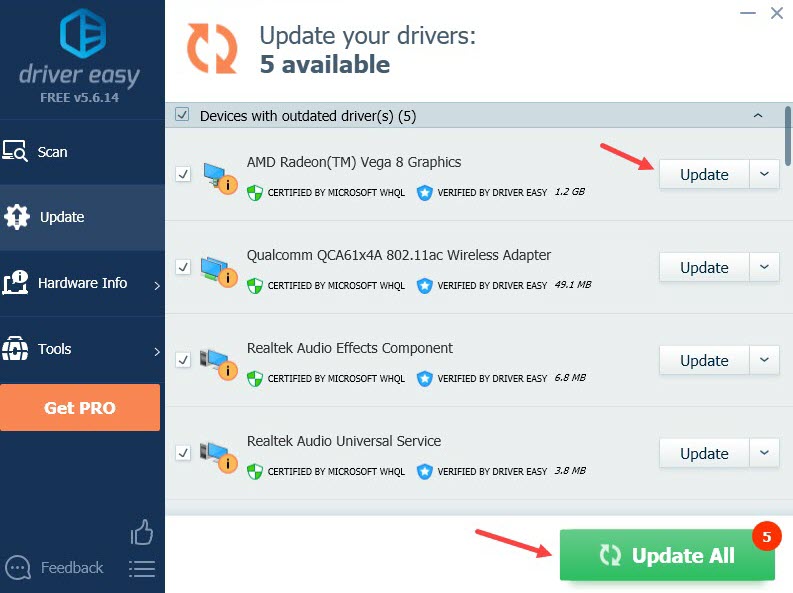
Restart your PC for the new driver to take effect. Check if the monitor ghosting issue has gone. If this doesn’t work in your case, try the last solution.
Fix 5: Check your video port
If the video port of your monitor is faulty, it could probably cause you screen to ghost. We recommend taking your monitor to a local repair store since it’s very difficult to identify the problematic component and replace it. If your monitor is still under warranty, you may also contact the manufacturer for support.
Hopefully this article helps! Please feel free to leave a comment if you have any further questions.





